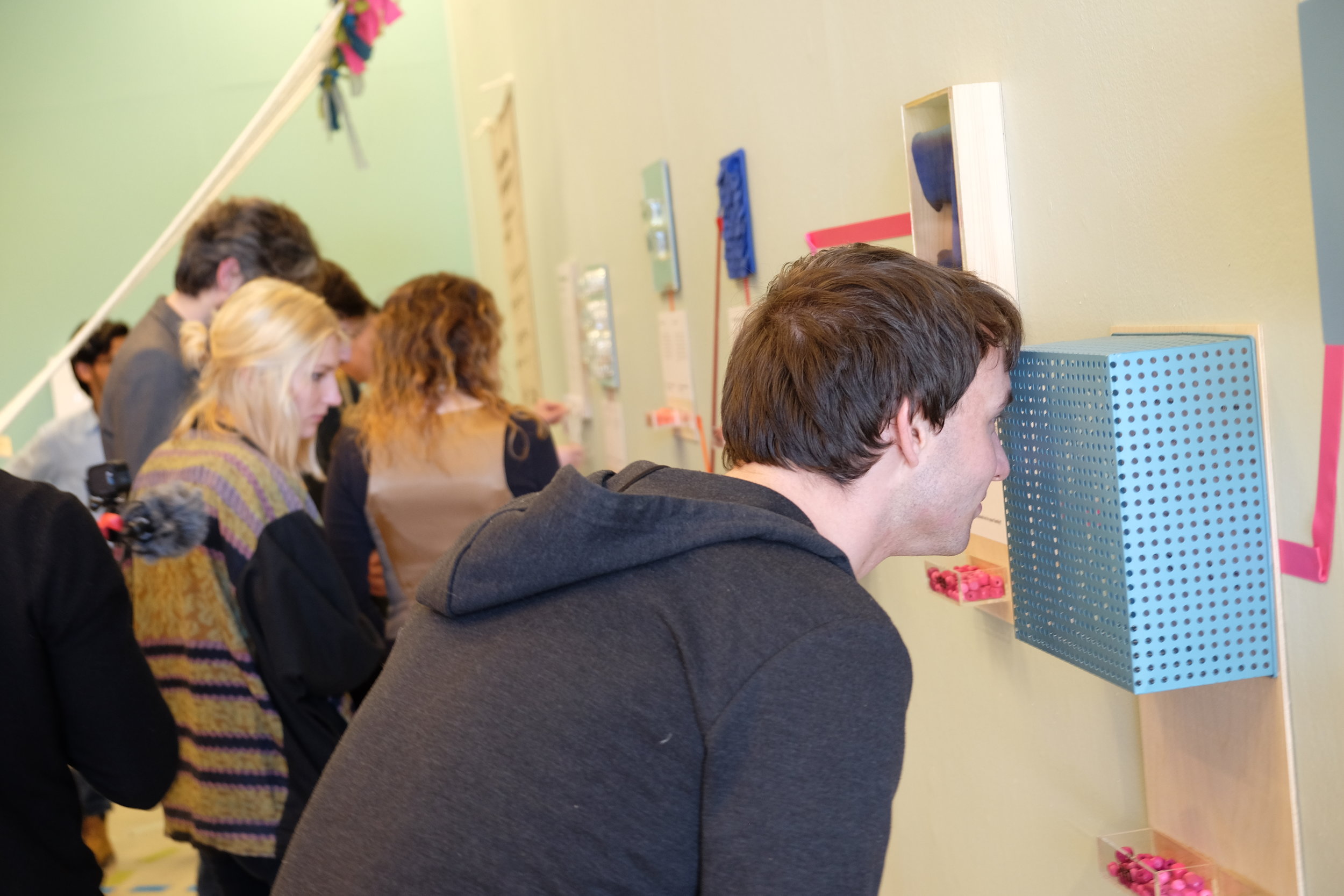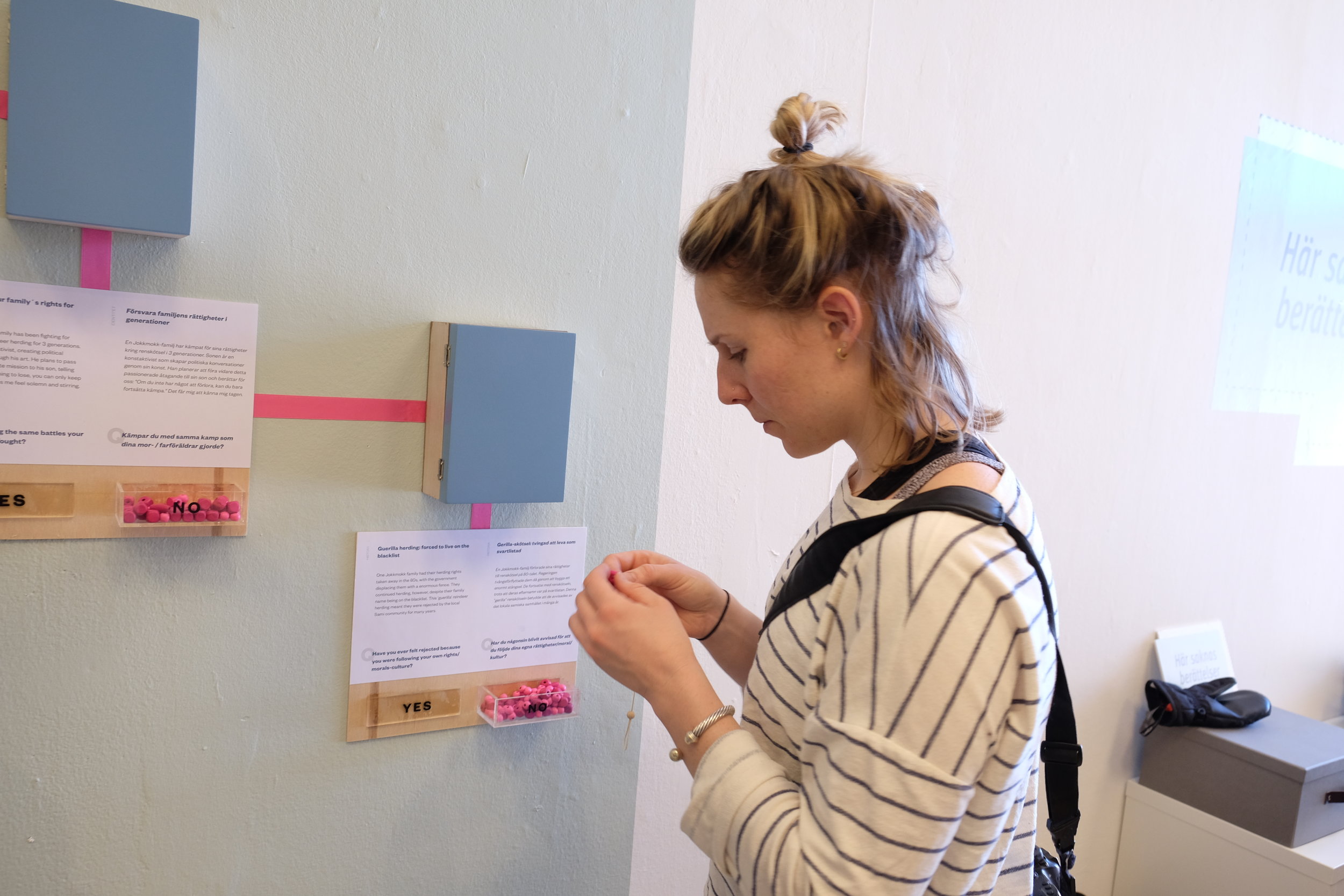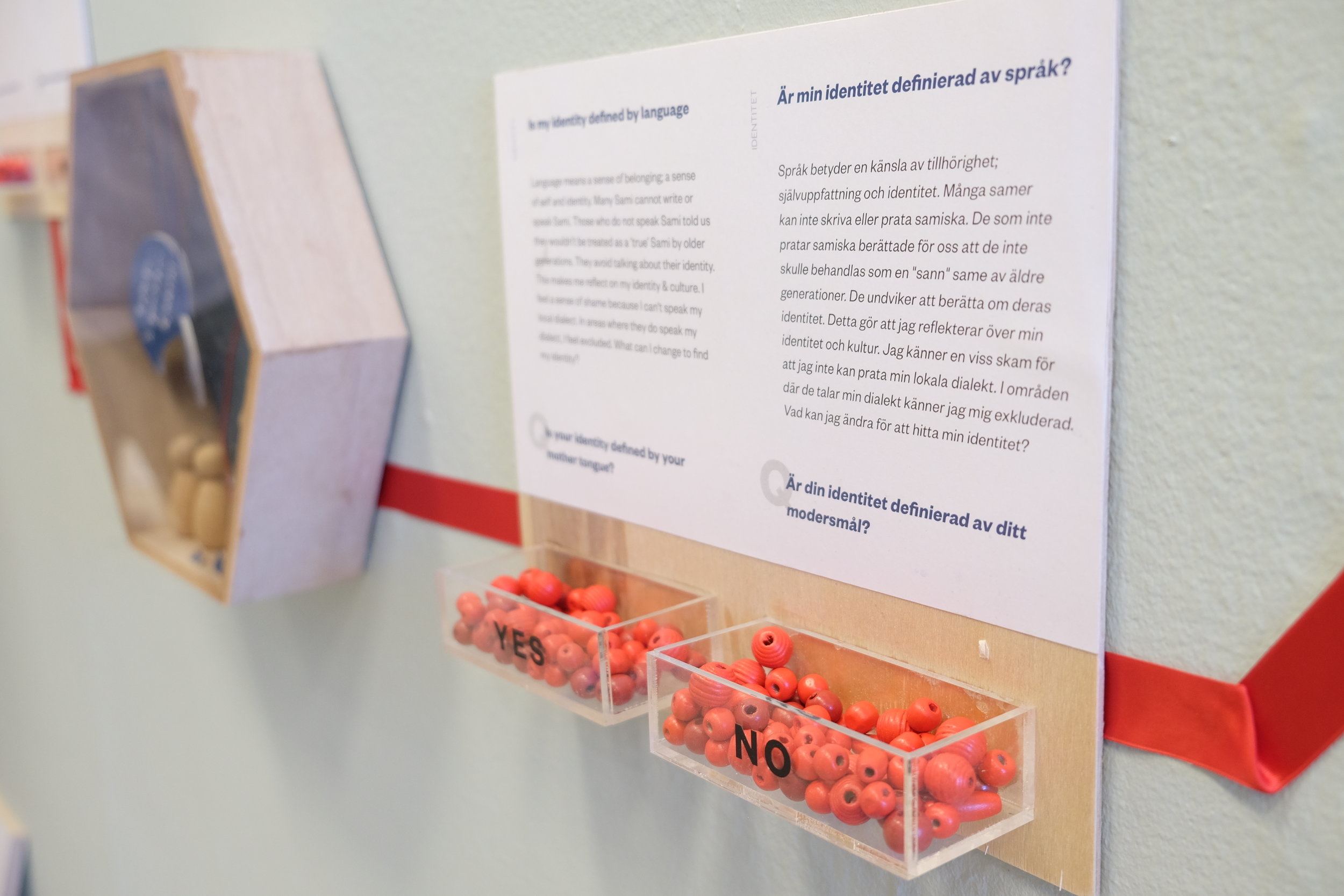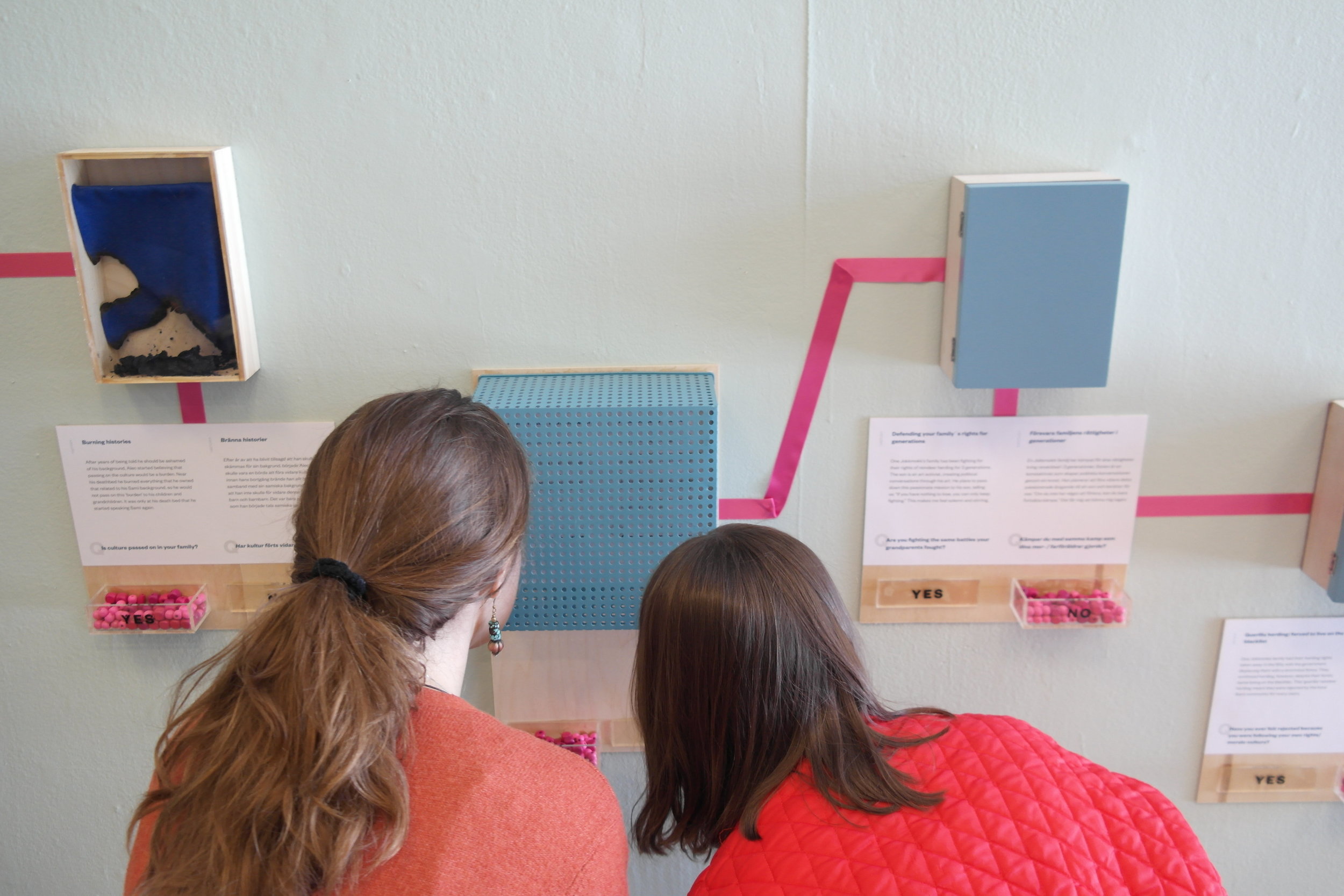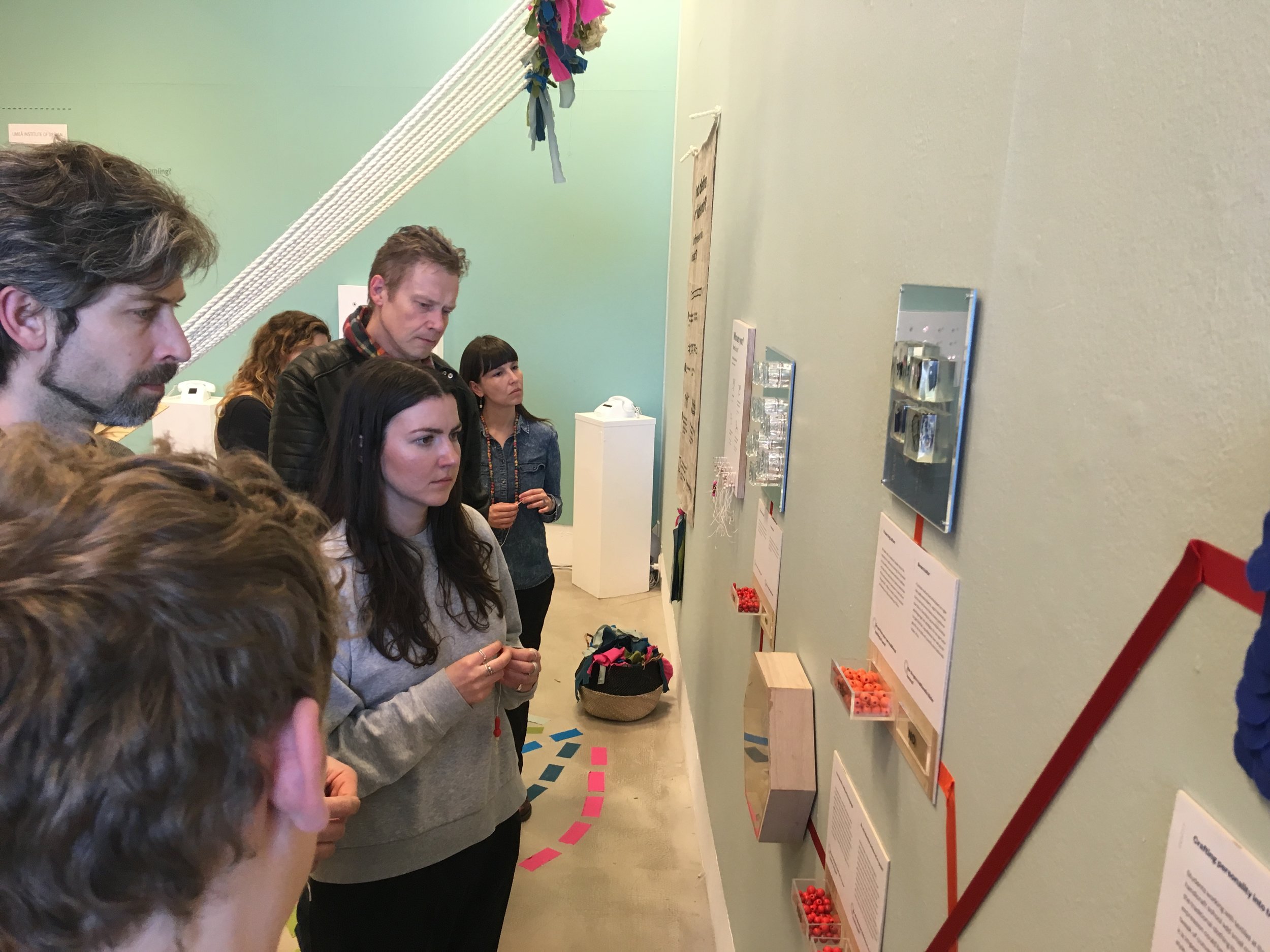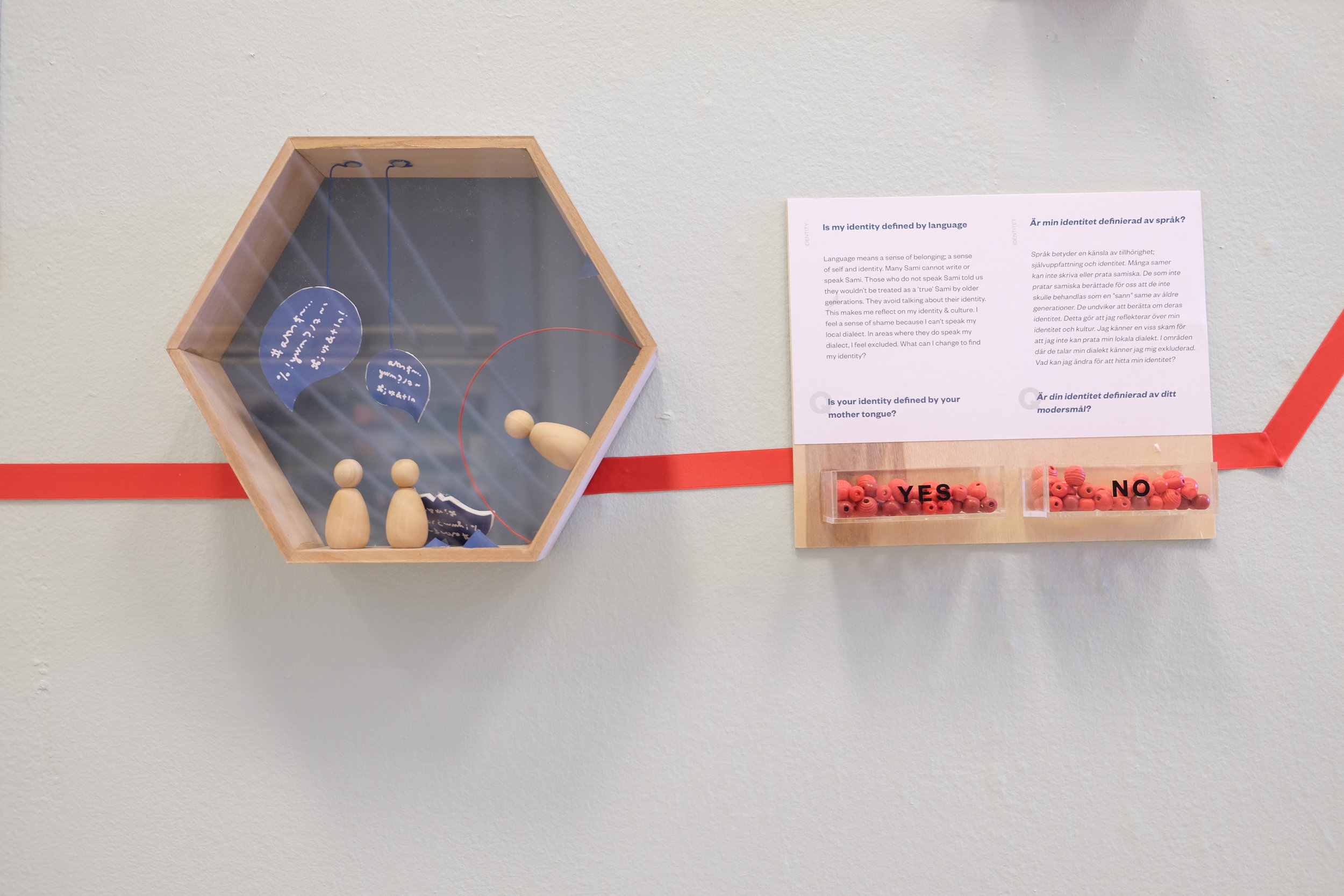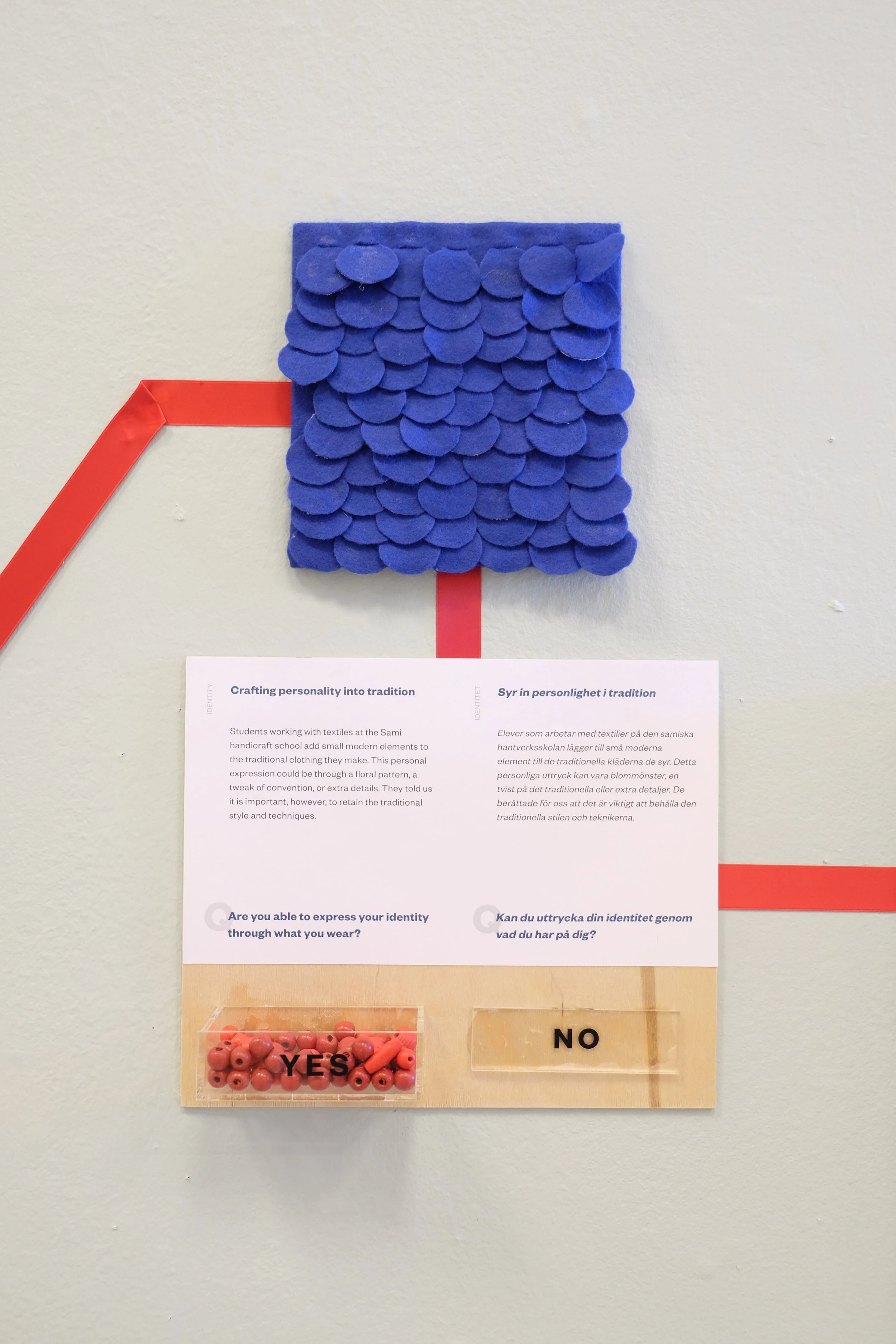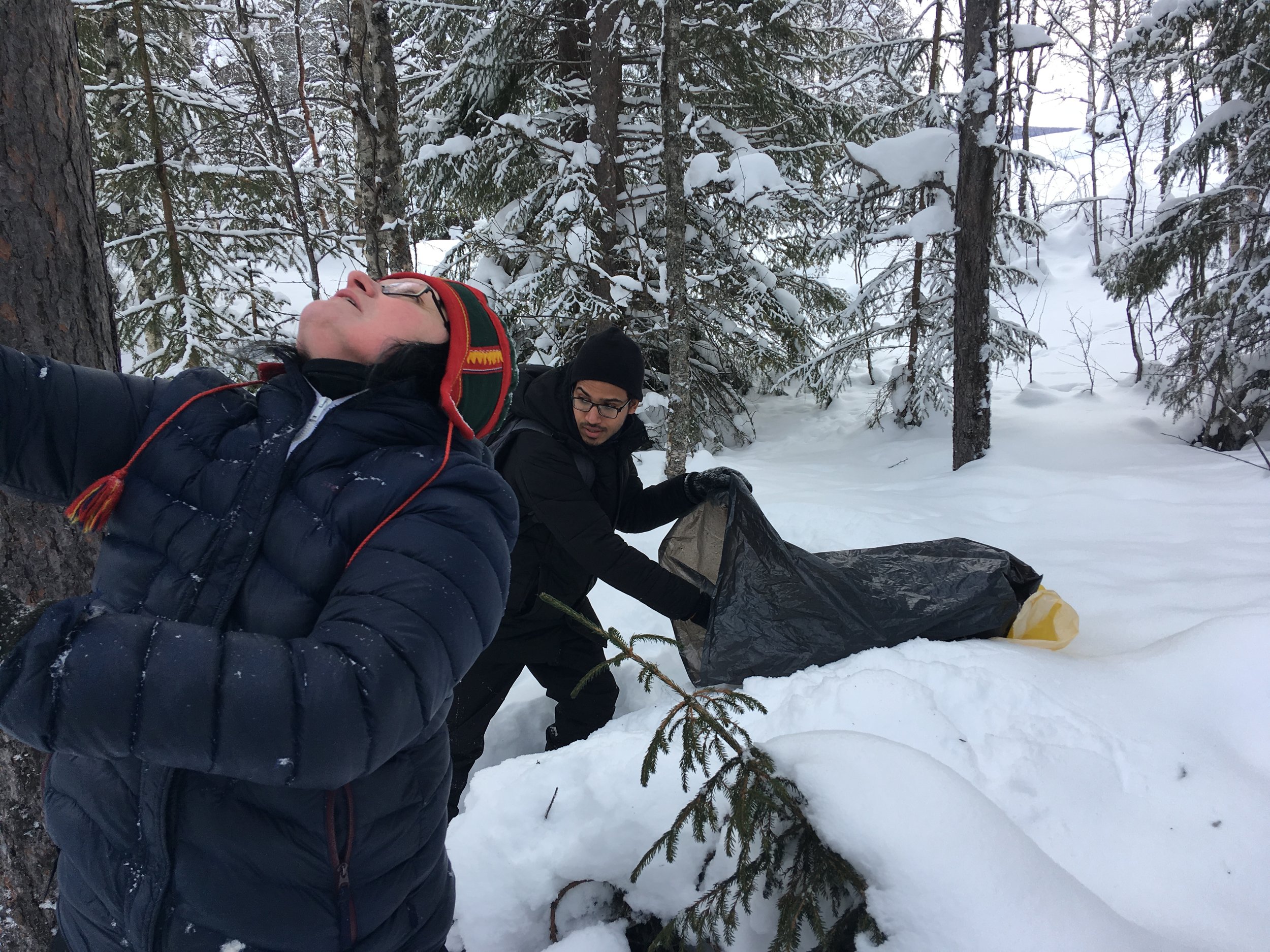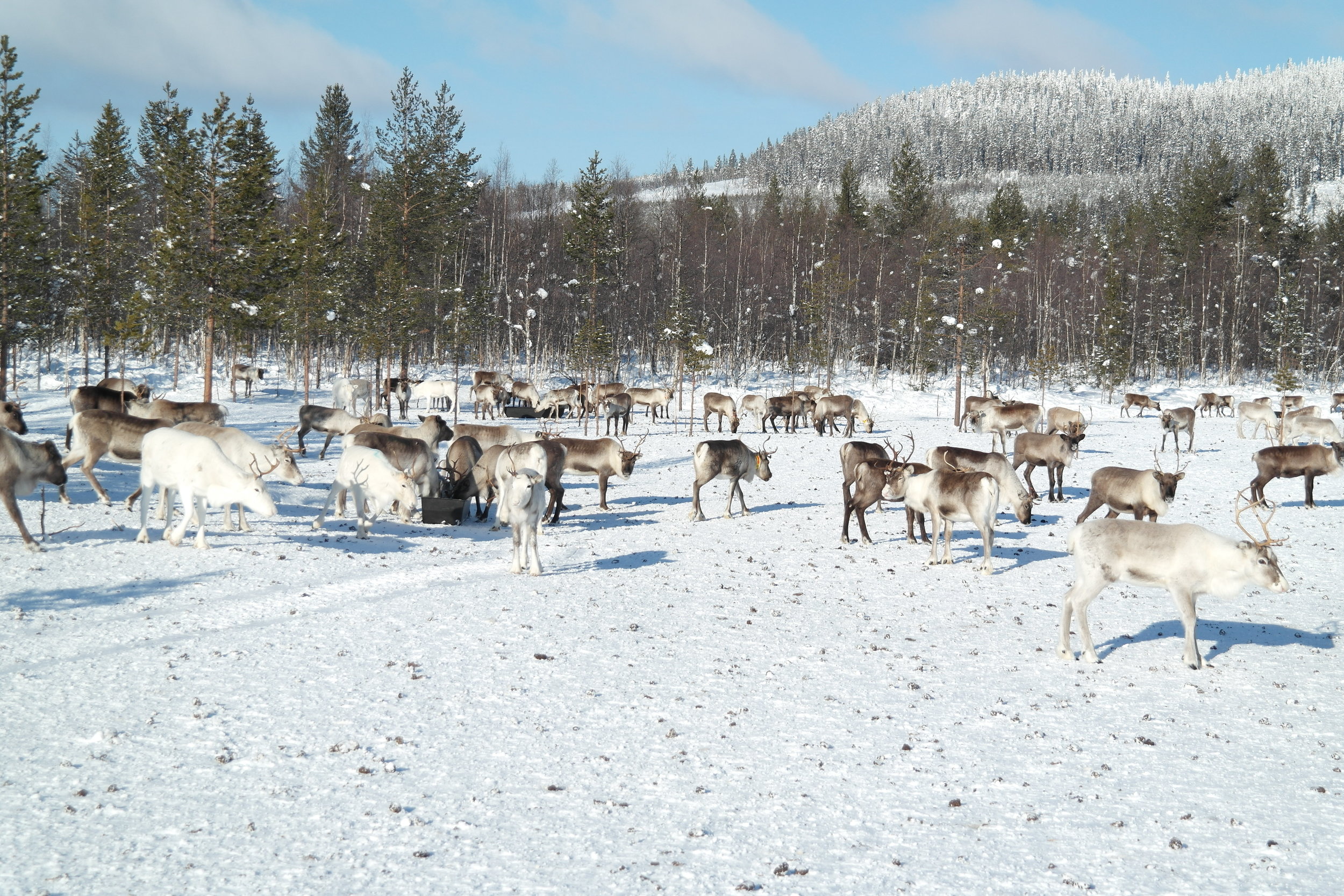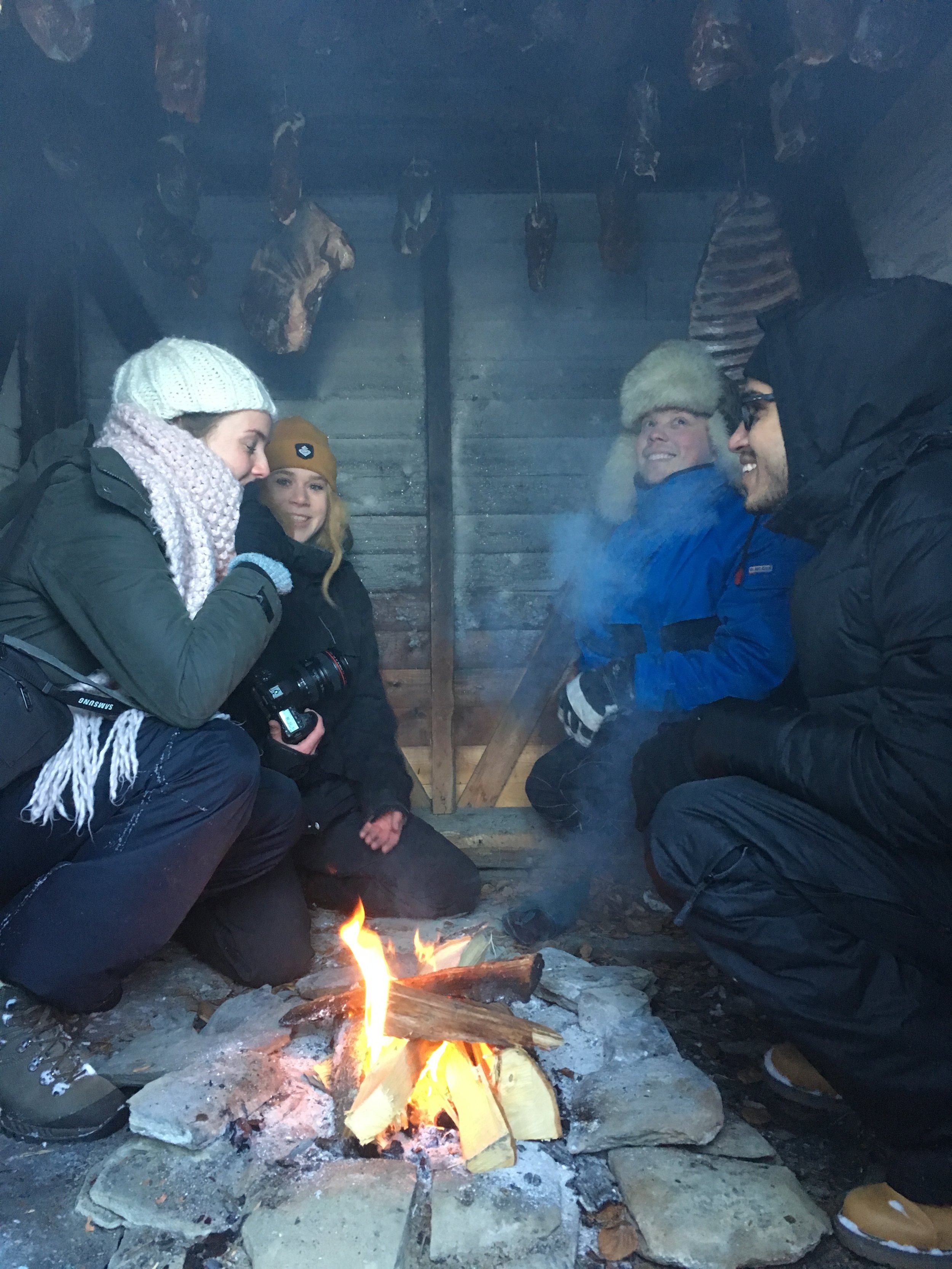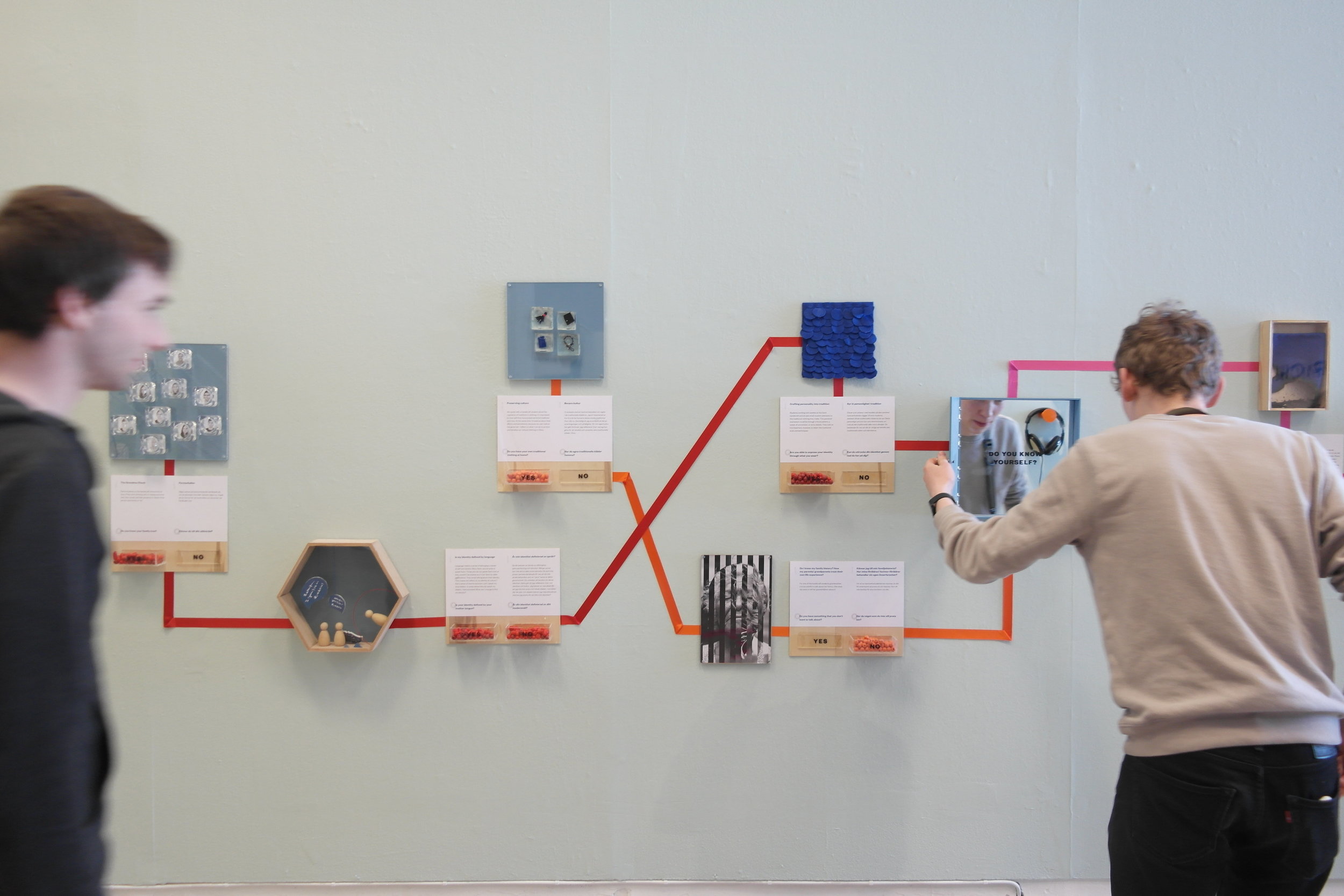IDENTITY
An interactive exhibition in co-creation with Sami
Introduction
In this project we have been exploring decolonizing design. How can we develop an ethical perspective that can facilitate more democratic and anti-oppressive way of designing when engaging with different communities that have different worldviews.
The project started with participatory fieldwork with the Sami, the indigenous people of Norway, Sweden, Finland and Russia. The goal was to see what happens when different communities look into each others curious eyes. The output of the course has been the design of an interactive exhibition designed with a shift in portraying communities through “otherness” towards portraying “we-ness”.
Outcome
The output was the design of an interactive exhibition for the Västerbottens Museum in Umeå. In this exhibition we share our experiences with the Sami. By means of engaging the visitors in our stories and asking questions about their own culture, identity and history we shift from portraying “otherness” towards portraying “we-ness”. The interactive exhibition makes the visitors reflect similarities, differences and privileges across communities.
Details
University: Umeå Institute of Design
Year: 2018
Duration: 5 weeks
Team: Jijia Tao, Toby Whelan, Iris Ritsma
Partners:
Sámiid riikkasearvi
Sámi Duodji
Västerbottens museum
Funded by: Nordic cultural fund
Design outcome
Do you know yourself?
By sharing our stories and experiences with the Sami and asking people a related question about their own experiences we shed a light on togetherness and we-ness in a complex and multi-cultural world

How it works
Making your identity - How priviledged are you?
In our exhibition we tell the stories about the Sami and their history of oppression in Sweden, also we tell some of our own stories. Each story is accompanied with and interactive visualization or metaphor. The stories are divided into three different categories, Culture, Identity and History. When the visitors have read or experienced the story they are asked a question about themselves and their culture, identity or history. The answer to the stories can either be “yes” or “no”. when your answer is the one that is privileged over the other answer you get to pick a bead and put it onto your thread. As the visitor gets further in the process it becomes clear how privileged some of us are compared to people of other communities. Also we realize how much we have in common.
Take a thread
Follow stories
Answer Questions
Pick a bead
Preserving culture
We spoke with a handicraft student about the regulation of traditions in clothing. I’m impressed by how well they have preserved traditions until now. At the same time I’m jealous about their efforts and persistence, because my own culture has gone lost. I reflect on what I can do to protect and develop our cultural clothing in China.
Do you have our own traditional clothing at home?
The grandma check
Some students at the handicraft school told us how, if they were dancing with or dating someone new, they would call their grandma to check if the person was family or not.
Do you know your family tree?
Defending your family’s rights for generations
One Jokkmokk’s family has been fighting for their rights of reindeer herding for 3 generations. The son is an art activist, creating political conversations through his art. He plans to pass down this passionate mission to his son, telling us: “if you have nothing to lose, you can only keep fighting”. This makes me feel solemn and stirring.
Are you fighting the same battles your grandparents fought?
Guerilla herding: forced to live on the blacklist
One Jokkmokk family had their herding rights taken away in the 80s, with the government displacing them. They continued herding, however, despite their family name being on the blacklist. This ‘guerilla’ reindeer herding meant they were rejected by the local Sami community for may years.
Have you ever felt rejected because you were following your own rights/morals/culture?
Family history in the museum
Lisa’s grandmother used to own many silver broches, handmade pieces of jewelry that are as symbolic as the Sami clothing. One day, a local policeman forced her to sell him the silver very cheap. For many years these valuable possessions were lost from the family. Now, some of these broches are on display in the Sami museum, so Lisa visits the museum to reflect on her heritage.
Have you ever had something taken away by the police?
Do I Know my family history?
For one of the handicraft students’ grandmother it is too painful to talk about her history. She does not want to tell her grandchildren about it.
Do you have something that you don’t want to talk about?
Is my identity defined by language
Language means a sense of belonging; a sense of self and identity. Many Sami cannot write or speak Sami. Those who do not speak Sami told us they wouldn’t be treated as a ‘true’ Sami by older generations. They avoid talking about their identity. This makes me reflect on my identity and culture. I feel a sense of shame because I can’t speak my local dialect. In areas where they do speak my dialect, I feel excluded. What can I change to find my identity?
Is your identity defined by your mother tongue?
Burning histories
After years of being told he should be ashamed of his background, he started believing that passing on the culture would be a burden. Near his deathbed he burned everything that he owned that related to his Sami background, so he would not pass on this “burden” to his children and grandchildren. It was only at his deathbed that he started speaking Sami again.
Is culture passed on in your family?
Crafting personality into tradition
Students working with textiles at the Sami handicraft school add small modern elements to the traditional clothing they make. This personal expression could be through a floral pattern, a tweak of convention or extra details. They told us it is important, however, to retain traditional style and techniques.
Are you able to express your identity through what your wear?
Process
Ethnographic fieldwork
Storytelling
Exhibition Design
Design process - Ethnographic Fieldwork
Spending 5 days living with the Sami, the indigenous people in North Sweden

Ethnographic fieldwork
What happens when different communities look into each others curious eyes?
The project started with participatory fieldwork. With a small team of 4 students we went to a Sami community in the far north of Sweden. In total we spend 5 days living with the Sami taking part in different activities, feeding reindeers, collecting food in the woods, smoking reindeer meat, meeting craftsmen and women, and many interesting conversations. An important part of our experience was to also share our own background, culture and stories this way an equal conversation arose with mutual learnings.
Research Techniques
Listen
Experience
Participate
Share
Impressions of the fieldwork
Learning & experiencing the reindeer herding culture
Learning about the sami handicraft
The meaning of symbols, clothes and traditions
Story telling
Transforming knowledge and experiences into stories

A co-creative story telling workshop
The next phase was all about telling stories and engaging each other in our ethnographic data. We did various workshops about telling stories, experiencing stories and how to make stories engaging. In the end all 12 students that participated in the course had come up with several stories. In a co-creative workshop these stories were shared with stakeholders, tutors, students and the people we met during the fieldwork.
The stories were clustered in five main themes each represented by an umbrella. The stories were hung under the umbrellas and by means of strings connections, disconnections and associations were laid out between the umbrella’s. This workshop has been the basis for creating a structure for the exhibition.
clustering the stories
After the workshop many themes and connections were discovered. With our class we went over the times once again and we clustered them into three final categories. Me and my team picked the topic of Identity as a basis for building our part of the exhibition.
Making the exhibition



